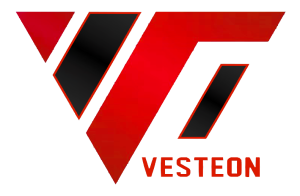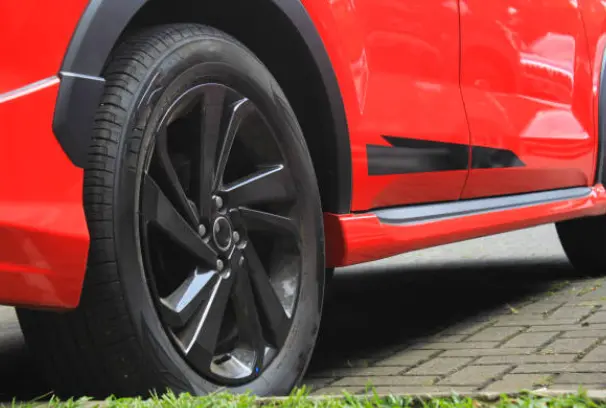OEM rims, or Original Equipment Manufacturer rims, are wheels produced by the same company that made the original parts for a vehicle. These rims are specifically designed to match the specifications and quality of the vehicle they accompany. This ensures a perfect fit and finish, maintaining the vehicle’s intended performance and aesthetics. For professionals in automotive fields, OEM rims offer reliability and consistency that aftermarket options may lack.
The Professional Appeal of OEM Rims
Automotive repair specialists and enthusiasts who work with cars often find OEM rims to be a pick because of their precise engineering and the high-quality standards they adhere to ensure durability and performance levels meet the manufacturers’ strict criteria for excellence. Pros in the industry lean towards OEM wheels as they perfectly match the design of a vehicle. An essential factor, for upholding warranty terms or maximizing performance potential.
How Do OEM Rims Enhance Performance?
Performance Advantages of OEM Rims
The use of OEM rims can significantly enhance a vehicle’s performance. These rims are engineered to optimize handling characteristics, providing stability and balance that aftermarket alternatives might not guarantee. Their weight distribution is meticulously calculated to complement the suspension system, leading to improved fuel efficiency and reduced wear on tires. Moreover, OEM rims contribute to better braking performance due to their precise compatibility with the vehicle’s brake components.
Comparing Performance with Aftermarket Options
When comparing OEM rims with aftermarket options, several factors become evident. While aftermarket rims may offer a broader range of styles and finishes, they often require modifications or adjustments that can compromise vehicle integrity. In contrast, Vesteon highlights that OEM rims are designed for seamless integration with existing systems. This compatibility ensures that all mechanical functions operate within safe parameters, reducing potential risks associated with mismatched components.
In summary, professionals looking for performance in their automotive endeavors can benefit greatly from opting for OEM wheels. Their meticulous design not only improves vehicle performance but also guarantees adherence to manufacturer specifications, making them a valuable choice for any automotive enthusiast striving for top-notch quality in their projects.
Are There Financial Benefits to Investing in OEM Rims?
Cost Analysis for Professionals
Opt for OEM rims can offer benefits to automotive industry experts despite the higher upfront cost compared to aftermarket choices; their lasting quality and durability make them a wise long-term investment by reducing the need for frequent replacements and lowering maintenance expenses over time.
Furthermore using OEM wheels can also contribute to preserving the resale worth of a car as cars with components like wheels are generally seen as more trustworthy and well cared for. This can result in enhanced resale prices which could be beneficial for individuals, in the vehicle trade business looking to maximize their profits.
Maintenance and Longevity
OEM rims require less maintenance compared to their aftermarket counterparts. Their precise engineering ensures that they fit perfectly with the vehicle’s existing components, reducing wear and tear on other parts such as tires and suspension systems. This compatibility minimizes the risk of mechanical issues arising from misaligned or improperly fitted wheels.
Additionally, OEM rims are manufactured using high-quality materials that resist corrosion and damage from environmental factors. This resilience extends their lifespan and ensures consistent performance over time. For professionals who demand reliability in their work, the reduced need for frequent repairs or replacements translates into operational efficiency and cost savings.
How Do Aesthetics Influence the Decision?
The Visual Appeal of OEM Rims
The visual attractiveness of OEM rims plays a role in professional choices as well. These rims are crafted to enhance the car’s overall design aesthetics while preserving its initial visual charm. This uniformity holds great importance, for professionals engaged in restoration endeavors or premium automotive services where upholding authenticity remains crucial.
Factory-installed rims offer a refined appearance that boosts the overall look of the car without sacrificing its durability and strength. They are crafted to reflect car styles while still holding onto a classic charm that caters to customers who value both fashion and practicality.
Professional Image and Brand Consistency
In the industry’s business landscape, it’s crucial to uphold a polished image. By opting for OEM rims, companies can maintain brand continuity. Guarantee that every vehicle meets manufacturer standards. Consistency not only enforces brand integrity but also nurtures trust with customers seeking top-notch service quality.
People in the industry who value maintaining a brand image know that each part of a car showcases their dedication to quality workmanship and high standards of service excellence. By opting for OEM rims or generic ones on vehicles, they showcase their meticulous approach and unwavering commitment to providing top-notch outcomes—a trait that appeals to customers looking for expert automotive services.
To sum it up nicely: opting for OEM wheels not only saves money on upkeep and boosts resale worth but also adds a touch of style that helps uphold brand reputation. Those in the business of delivering top-tier service and staying ahead of the competition find that investing in OEM rims aligns with industry norms and meets customer demands.
What Are the Risks or Downsides of Choosing OEM Rims?
Potential Drawbacks for Professionals
Although there are advantages to using OEM rims for professionals to think about, potential drawbacks before making a decision. One of the concerns that professionals need to consider when it comes to OEM rims is the costs involved. OEM wheels often come with a price tag initially when compared to aftermarket options. This initial expense could have an impact on businesses that have limited budgets or need to manage multiple vehicles.
One other possible disadvantage relates to the restricted design options with OEM rims since they are designed to align with the vehicle’s original specifications; this frequently results in fewer selections, for aesthetic appeal and personalization preferences. Therefore, professionals aiming for styles or particular visual upgrades might find aftermarket rims to provide a wider range of choices.
Weighing Risks Against Benefits
When considering the drawbacks of using OEM rims for your vehicle compared to the advantages they offer in terms of longevity and compatibility with your car’s systems at a higher upfront price tag that can be recuperated through reduced maintenance expenses over time and fewer repair needs due to their sturdiness and integration with vehicle components, despite having fewer design choices available, the confidence in their reliability and functionality can sometimes trump the preference for personalization options.
Experts should take into account how these elements match up with their concerns and objectives in the industry world. If dependability and adhering to the standards of the manufacturer are priorities, the advantages of using OEM rims might outweigh any drawbacks that could arise.
How to Make an Informed Decision on Rim Investment?
Evaluating Your Specific Needs
When considering investing in rims as a professional decision-maker it is crucial to first assess your requirements thoroughly. Think about aspects like financial limitations, car varieties, and customer demands. Determine whether the main emphasis lies on functionality, appearance, or a blend of the two.
To decide if OEM rims are a fit for your needs, it’s important to understand your specific requirements and consider whether aftermarket options could better meet your goals.
Consulting with Experts and Manufacturers
Seeking advice from professionals in the field and reaching out to companies can offer guidance on selecting the most suitable rims for your requirements and preferences.
Manufacturers like Vesteon can offer detailed information about their OEM wheels, ensuring that you have access to accurate data when making your decision. This collaboration can lead to a more informed choice that aligns with professional standards.
Final Thoughts on Investment Strategy
Ultimately when deciding to purchase OEM wheels it’s crucial to weigh the advantages and drawbacks beforehand. By taking the time to assess your requirements and seek advice from professionals, you can make a choice that improves your business offerings while also being mindful of financial aspects.
In the end, opting for OEM wheels should demonstrate a dedication to top-notch quality and exceptional performance—a way of investing in maintaining standards in the automotive sector.


